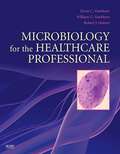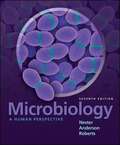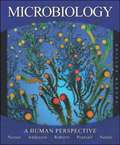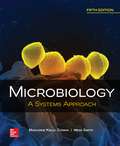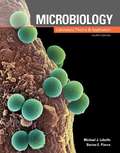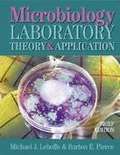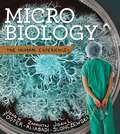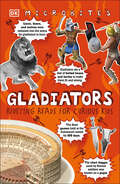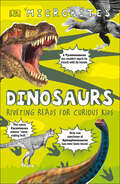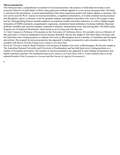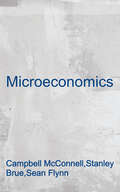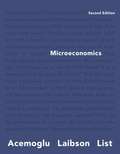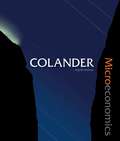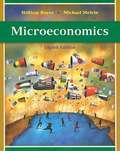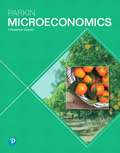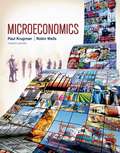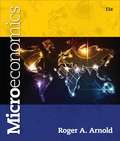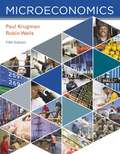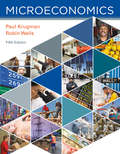- Table View
- List View
Microbiology for the Healthcare Professional
by Karin C. Vanmeter Robert J. Hubert William G. VanmeterTextbook on the spread, control, and prevention of infectious diseases for healthcare professionals and students. General concepts within the life sciences are covered, followed by chapters that apply these concepts to the life science/health field and infections in each body system. Concluding topics include the immune system, pharmacology, antimicrobial drugs, microorganisms and different age groups, the environment, and biotechnology.
Microbiology: A Human Perspective
by Eugene Nester Denise Anderson C. RobertsPerfect for the non-major/allied health student (and also appropriate for mixed majors courses), this text provides a rock solid foundation in microbiology. By carefully and clearly explaining the fundamental concepts and offering vivid and appealing instructional art, "Microbiology: A Human Perspective" draws students back to their book again and again The text has a concise and readable style, covers the most current concepts, and gives students the knowledge and mastery necessary to understand advances of the future. A body systems approach is used in the coverage of diseases.
Microbiology: A Human Perspective (Fourth Edition)
by C. Evans Roberts Eugene W. Nester Denise G. Anderson Nancy N. Pearsall Martha T. NesterAppropriate for the non-major/allied health student, this authoritative text carefully explains the fundamentals, providing a general overview of the principles, followed by more detailed explanations. With its easy-to-read writing style, Microbiology: A Human Perspective offers modern coverage on such topics as genomics, biofilms, and quorum sensing. A body systems approach is used in the coverage of diseases.
Microbiology: A Human Perspective (Microbiology Ser.)
by C. Evans Roberts Eugene W. Nester Denise G. Anderson Nancy N. Pearsall Martha T. NesterAppropriate for the non-major/allied health student, this authoritative text carefully explains the fundamentals, providing a general overview of the principles, followed by more detailed explanations. With its easy-to-read writing style, Microbiology: A Human Perspective offers modern coverage on such topics as genomics, biofilms, and quorum sensing. A body systems approach is used in the coverage of diseases.
Microbiology: A Systems Approach
by Marjorie Kelly CowanThis book is suited for all kinds of students and doesn't require any prerequisite knowledge of biology or chemistry. If you are interested in entering the health care profession in some way, this book will give you a strong background in the biology of microorganisms, without overwhelming you with unnecessary details. Don't worry if you are not in health professions. A grasp of this topic is important for everyone and can be attained with this book.
Microbiology: Laboratory Theory & Application
by Michael J. Leboffe Burton E. PierceBeautiful full-color photography, effective illustrations, carefully written exercises, and a reasonable price combine to make Microbiology: Laboratory Theory & Application the best-selling microbiology lab manual series on the market. This edition satisfies the content needs of courses populated by majors or in nonmajors courses where an increased coverage of applied microbiology is desired.
Microbiology: Laboratory Theory and Application (Brief Edition)
by Michael J. Leboffe Burton E. PierceThe intent of this lab manual was to produce an abridged version of Microbiology Laboratory Theory and Application, 2nd ed., and give professors an option when selecting a lab manual for their course.
Microbiology: The Human Experience
by John W. Foster Zarrintaj Aliabadi Joan L. SlonczewskiAt the core of Microbiology: The Human Experience are case histories that put foundational concepts in a real-world context. The bones are the consistent structure of learning objectives, summaries, and questions that support the clear, accurate, and organized presentation of the content. The connective tissue is the art and highly readable text, by two masterful teachers and an experienced physician assistant, which puts infectious disease front and center and highlights contemporary topics such as the human microbiome.
Microbiome, Investigation Notebook with Article Compilation
by The Lawrence Hall of ScienceNIMAC-sourced textbook
Microbiome, Investigation Notebook with Article Compilation [Grade 6]
by The Lawrence Hall of ScienceNIMAC-sourced textbook
Microbites: Riveting Reads for Curious Kids (DK Bitesize Readers)
by DKThis nonfiction chapter book about gladiators is chock-full of bite-size facts, black-and-white photographs, and CGI illustrations to dazzle and engage even the most reluctant reader.The exhilarating world of gladiators might seem intimidating, but Microbites: Gladiators brings kids face to face with these famous fighters in a manageable way, sharing chunks of information on need-to-know topics like different battle styles, Roman referees, gods and temples, and other aspects of life inside the Colosseum. Illustrations and photographs accent nearly every page, while highlighted text calls out important takeaways about each chapter topic, revealing new details about this pulse-racing piece of Ancient Roman history. For further learning, kids can turn to the book's eight-page reference section, where they'll find a gladiator glossary, a historical timeline, and a list of the most notable Roman emperors. Whether they're new to Ancient Rome or seasoned pros, readers will find plenty of fascinating facts to chew on in Microbites: Gladiators.DK's Microbites series takes daunting nonfiction topics and transforms them into easy-to-digest, mini-guides on kids' favorite subjects from history, science, and the natural world. Packed with eye-catching illustrations, detailed photographs, and the latest scientific research on everything from dinosaurs to mummies, the Microbites series encourages a healthy reading appetite in kids ages 8 through 12, and will leave them hungry to learn more.
Microbites: Riveting Reads for Curious Kids (DK Bitesize Readers)
by DKThis nonfiction chapter book is chock-full of bite-size dino facts, black-and-white photographs, and CGI illustrations to dazzle and engage even the most reluctant reader.The prehistoric world is vast, but Microbites: Dinosaurs breaks it all down into manageable chunks of information on need-to-know topics like dino diet, species identification, fossilization, and life after dinosaurs. Illustrations and photographs accent nearly every page, while highlighted text calls out important takeaways about each chapter topic, revealing new details about the amazing creatures that once roamed Earth. For further learning, kids can turn to the book&’s eight-page reference section, where they&’ll find a glossary, a paleontological timeline, and even a dino family tree. Whether they&’re new to the prehistoric world or seasoned pros, readers will find plenty of fascinating facts to chew on in Microbites: Dinosaurs.DK&’s Microbites series takes daunting nonfiction topics and transforms them into easy-to-digest, mini-guides on kids&’ favorite subjects from history, science, and the natural world. Packed with eye-catching illustrations, detailed photographs, and the latest scientific research on everything from dinosaurs to mummies, the Microbites series encourages a healthy reading appetite in kids ages 8 through 12, and will leave them hungry to learn more.
Microeconometrics: Methods and Applications
by A. Colin Cameron Pravin K. TrivediThis book provides the most comprehensive treatment to date of microeconometrics, the analysis of individual-level data on the economic behavior of individuals or firms using regression methods for cross section and panel data. The book is oriented to the practitioner. A basic understanding of the linear regression model with matrix algebra is assumed. The text can be used for a microeconometrics course, typically a second-year economics PhD course; for data-oriented applied microeconometrics field courses; and as a reference work for graduate students and applied researchers who wish to fill in gaps in their toolkit. <p><p>Distinguishing features of the book include emphasis on nonlinear models and robust inference, simulation-based estimation, and problems of complex survey data. The book makes frequent use of numerical examples based on generated data to illustrate the key models and methods. More substantially, it systematically integrates into the text empirical illustrations based on seven large and exceptionally rich data sets.
Microeconomics
by Russell Cooper A. Andrew JohnThis textbook, Microeconomics: Theory Through Applications, centers around student needs and expectations through two premises: ... Students are motivated to study economics if they see that it relates to their own lives. ... Students learn best from an inductive approach, in which they are first confronted with a problem, and then led through the process of solving that problem. Many books claim to present economics in a way that is digestible for students; Russell and Andrew have truly created one from scratch. This textbook will assist you in increasing students' economic literacy both by developing their aptitude for economic thinking and by presenting key insights about economics that every educated individual should know.
Microeconomics
by Sean Flynn Stanley Brue Campbell McConnellOptimize your outcomes. With McConnell/Brue/Flynn, improving outcomes has never been simpler. If given the chance to work harder or smarter, which would you choose? This product’s modern approach makes learning and applying economics easier for instructors and students alike. From real-life examples to cutting-edge learning resources, McConnell offers a student-centered learning environment that presents the subject matter in new and engaging ways. For instructors, a fully supportive teaching package does the heavy lifting so you can focus on what you love.
Microeconomics
by Daron Acemoglu John List David LaibsonThroughout Microeconomics, authors Daron Acemoglu, David Laibson, and John List use real economic questions and data to help students learn about the world around them. <P><P> Taking a fresh approach, the authors use the themes of optimization, equilibrium and empiricism to illustrate the power of simple economic ideas, and their ability to explain, predict, and improve what happens in the world. Each chapter begins with an empirical question that is later answered using data in the Evidence-Based Economics feature. As a result of the text’s practical emphasis, students will learn to apply economic principles to guide the decisions they make in their own lives.
Microeconomics
by David C. ColanderWritten in an informal colloquial style, this student-friendly Principles of Microeconomics textbook does not sacrifice intellectual depth in its quest for accessibility. The author's primary concern is to instill "economic sensibility" in the student. Colander emphasizes the intellectual and historical context to which the economic models are applied. Distinguishing features found within Colander's text are: Cutting Edge and Modern Colloquial Style Narrative Focus on Policy Emphasis on the Importance of Institutions and History Focus on Modeling: Economics is a method of reasoning, not truths. Presents Alternative Perspectives in Economics
Microeconomics
by David C. ColanderColanders Microeconomics 11e is specifically designed to help today’s students succeed in the principles of economics course and grasp economics concepts they can apply in their daily lives. Colander’s trademark colloquial approach focuses on modern economics, institutions, history, and modeling. Colander presents and applies economic models, but also encourages students to think about model nuances, building their critical thinking skills and applying models to the real world. <P><P> Content in Colander is organized around learning objectives to make it easier for students to understand the material and for instructors to build assignments within Connect. Through Connect and SmartBook, students will find engaging activities, helpful tutorial videos, and learning resources at that moment of need.
Microeconomics
by William Boyes Michael MelvinEconomics is global and the Eighth Edition of MICROECONOMICS maintains the hallmarks of the Boyes/Melvin series--accessible writing, strong pedagogy, and integration of global economic issues--while faithfully presenting the latest thinking of economists on important microeconomic phenomena. The authors have carefully integrated their popular pedagogy, cutting-edge teaching and learning technology, and a full range of supplements to create a complete program that clearly illustrates the connections between key microeconomic principles and real-world business practices. The text has also been thoroughly updated with recent data and extensive coverage of important current issues, such as the economic effects of the war in Iraq, the 2008 financial crisis, and China's emergence as an economic power. In addition, MICROECONOMICS, Eighth Edition, provides an in-depth exploration of one of today's most significant issues--globalization--and its impact on economic growth and poverty, including a comparison of international standards of living and Global Business. A full range of accompanying learning technology ensures readers gain an understanding of the microeconomics concepts most important for career and business success.
Microeconomics
by Michael ParkinGet students to think like economists using the latest policy and data while incorporating global issues. Microeconomics, 13th Edition builds on the foundation of the previous edition and retains a thorough and careful presentation of the principles of economics. The text emphasizes real-world applications, the development of critical-thinking skills, diagrams renowned for their pedagogy and clarity, and path-breaking technology. As a hallmark, features in the chapter openings and endings encourage students to think critically about a news article relating to the issue, demonstrating how thinking like an economist can bring a clearer perspective and deeper understanding of today’s events.
Microeconomics (4th Edition)
by Paul Krugman Robin WellsWhen it comes to explaining fundamental economic principles by drawing on current economic issues and events, there is no one more effective than Nobel laureate and New York Times columnist Paul Krugman and co-author, Robin Wells. In this best-selling introductory textbook, Krugman and Wells' signature storytelling style and uncanny eye for revealing examples help readers understand how economic concepts play out in our world. This new edition is revised and enhanced throughout, including a much stronger array of superior online tools that are part of a complete, integrated online learning system.
Microeconomics (Eleventh Edition)
by Roger A. ArnoldIn this edition, the author intends to provide a comprehensive coverage of the financial and economic crisis available in principles of economics text with new sections on the future of Social Security, Medicare and Medicaid, framing, and neuroeconomics.
Microeconomics (Fifth Edition)
by Paul Krugman Robin WellsPaul Krugman and Robin Wells’ signature storytelling style helps readers understand how economic concepts play out in our world. The new edition, revised and enhanced throughout, now offers holistic digital learning tools as part of SaplingPlus, a complete, integrated online learning system. <p><p> This new edition is revised and enhanced throughout, including a much stronger array of superior online tools that are part of a complete, integrated online learning system.
Microeconomics (Fifth Edition)
by Paul Krugman Robin WellsWhen it comes to explaining fundamental economic principles by drawing on current economic issues and events, there is no one more effective than Nobel laureate and New York Times columnist Paul Krugman and co-author, Robin Wells. In this best-selling introductory textbook, Krugman and Wells' signature storytelling style and uncanny eye for revealing examples help readers understand how economic concepts play out in our world. This new edition is revised and enhanced throughout, including a much stronger array of superior online tools that are part of a complete, integrated online learning system.
